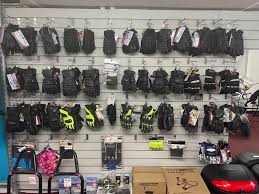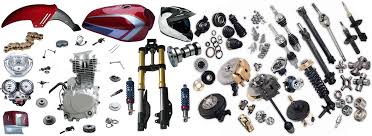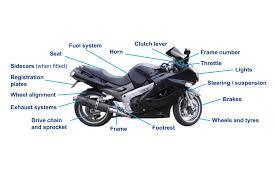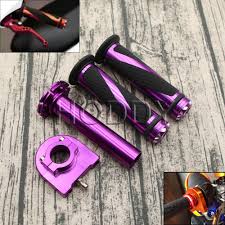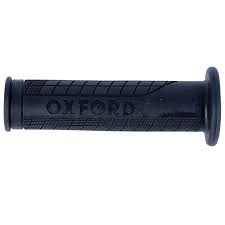Exploring the World of Children’s Motorbike Clothing: Safety and Style for Young Riders

Children’s Motorbike Clothing: Safety and Style Combined
Riding a motorbike can be an exhilarating experience for children, but safety should always come first. One essential aspect of ensuring their safety is providing them with proper motorbike clothing designed specifically for young riders.
The Importance of Children’s Motorbike Clothing
Children’s motorbike clothing serves a dual purpose: to protect young riders in case of accidents and to enhance their overall riding experience. These specially designed garments are made with durable materials that provide protection against abrasions, impacts, and adverse weather conditions.
From helmets to jackets, gloves to boots, each piece of children’s motorbike clothing plays a crucial role in keeping young riders safe on the road. High-visibility elements and reflective materials also help increase visibility, especially during low-light conditions.
Choosing the Right Gear for Your Child
When selecting motorbike clothing for your child, it’s essential to consider factors such as size, fit, comfort, and level of protection. Ensure that the gear meets safety standards and regulations to guarantee maximum protection in case of accidents.
Additionally, encourage your child to be involved in the selection process. Choosing gear that they find comfortable and stylish will not only increase their willingness to wear it but also instil a sense of responsibility when it comes to riding safely.
Staying Safe in Style
Gone are the days when safety gear was bulky and unattractive. Today, children’s motorbike clothing comes in a variety of styles, colours, and designs that cater to different tastes and preferences. From vibrant jackets to sleek helmets, young riders can now stay safe while expressing their unique personalities.
By investing in quality motorbike clothing for your child, you are not only prioritising their safety but also teaching them valuable lessons about responsibility and preparedness. Remember, safety should always be the top priority when it comes to enjoying the thrill of riding a motorbike.
9 Essential Tips for Choosing Safe and Durable Children’s Motorbike Clothing
- Ensure the clothing is made of durable and abrasion-resistant materials.
- Choose brightly coloured clothing for better visibility on the road.
- Look for adjustable straps and closures to ensure a snug fit.
- Consider clothing with built-in padding or armour for added protection.
- Check that the clothing is breathable to keep your child comfortable while riding.
- Opt for weatherproof gear to protect against rain and wind chill.
- Inspect the stitching and quality of seams to ensure durability under stress.
- Avoid loose-fitting clothing that could get caught in moving parts of the bike.
- Always follow manufacturer’s guidelines for cleaning and maintenance of the clothing.
Ensure the clothing is made of durable and abrasion-resistant materials.
When selecting children’s motorbike clothing, it is crucial to ensure that the garments are crafted from durable and abrasion-resistant materials. These materials provide essential protection in case of accidents or falls, helping to minimise injuries and keep young riders safe on the road. By choosing clothing made of sturdy fabrics designed to withstand wear and tear, parents can have peace of mind knowing that their child is well-equipped with gear that prioritises safety without compromising on comfort or style.
Choose brightly coloured clothing for better visibility on the road.
When selecting motorbike clothing for children, opt for brightly coloured garments to enhance visibility on the road. Bright colours such as neon yellows, oranges, and greens can significantly improve a young rider’s presence, especially in low-light conditions or areas with limited visibility. By choosing vibrant hues for their clothing, you can help ensure that your child stands out to other road users, promoting a safer riding experience for everyone involved. Prioritising visibility through brightly coloured clothing is a simple yet effective way to enhance safety while adding a touch of style to your child’s riding gear.
Look for adjustable straps and closures to ensure a snug fit.
When selecting children’s motorbike clothing, it is crucial to look for adjustable straps and closures to ensure a snug fit. Properly fitted gear not only enhances comfort but also plays a vital role in maximising safety on the road. Adjustable features allow for a customised fit that can accommodate growth spurts and varying body shapes, ensuring that the gear stays securely in place during rides. By prioritising adjustable straps and closures, parents can provide their young riders with clothing that offers both protection and comfort, setting the foundation for a safe and enjoyable riding experience.
Consider clothing with built-in padding or armour for added protection.
When choosing motorbike clothing for children, it is advisable to consider options that feature built-in padding or armour for enhanced protection. These additional layers of protection can help absorb impact and reduce the risk of injury in case of accidents. By opting for clothing with integrated padding or armour, parents can provide an extra level of safety for their young riders without compromising on comfort or style.
Check that the clothing is breathable to keep your child comfortable while riding.
When selecting children’s motorbike clothing, it is crucial to ensure that the garments are breathable to keep your child comfortable during rides. Breathable materials allow for proper air circulation, preventing overheating and discomfort, especially during longer rides or in warm weather conditions. By choosing breathable clothing for your child, you can help them stay cool and focused while enjoying their time on the road, enhancing both their comfort and overall riding experience.
Opt for weatherproof gear to protect against rain and wind chill.
When choosing children’s motorbike clothing, it is advisable to opt for weatherproof gear that can protect against rain and wind chill. Weatherproof garments, such as waterproof jackets and trousers, help shield young riders from the elements, ensuring they stay dry and comfortable during their rides. By investing in weatherproof gear, parents can provide an extra layer of protection for their children while allowing them to enjoy their motorbike adventures regardless of the weather conditions.
Inspect the stitching and quality of seams to ensure durability under stress.
When selecting children’s motorbike clothing, it is crucial to inspect the stitching and quality of seams to ensure durability under stress. Strong and well-constructed seams are essential for withstanding the rigours of riding and providing reliable protection in case of accidents. By paying attention to the stitching details, parents can rest assured that their child’s gear will maintain its integrity and offer optimal safety on the road.
Avoid loose-fitting clothing that could get caught in moving parts of the bike.
When selecting motorbike clothing for children, it is crucial to avoid loose-fitting garments that could potentially get caught in moving parts of the bike. Loose clothing poses a significant safety risk as it may interfere with the operation of the motorcycle and increase the chances of accidents. Opting for well-fitted attire ensures that young riders can move comfortably and safely without any hindrance, allowing them to focus on enjoying their ride while staying protected.
Always follow manufacturer’s guidelines for cleaning and maintenance of the clothing.
It is crucial to always adhere to the manufacturer’s guidelines for cleaning and maintaining children’s motorbike clothing. Following these instructions ensures that the gear remains in optimal condition, providing the necessary protection for young riders. Proper cleaning and maintenance not only prolong the lifespan of the clothing but also help retain its safety features and performance capabilities. By following the manufacturer’s recommendations, parents can ensure that their child’s motorbike clothing continues to offer reliable protection while they enjoy their riding adventures.

